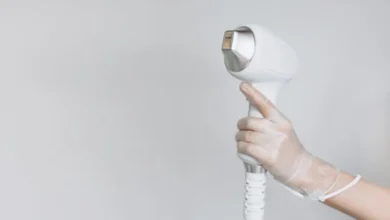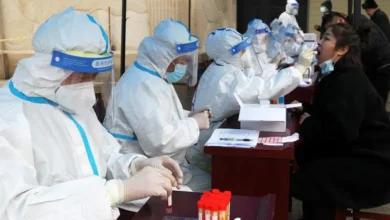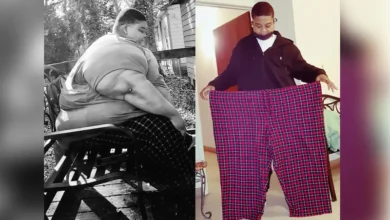Little evidence proving hyperbaric oxygen therapy benefits hair, skin health: Doctors

Several clinics in the United Arab Emirates have been promoting hyperbaric oxygen therapy (HBOT) as an effective method to stimulate hair growth and improve skin elasticity.
While some alternative medicine practitioners believe this therapy improves hair and skin health, hyperbaric oxygen therapy is commonly used to treat decompression sickness, carbon monoxide poisoning, and non-healing wounds.
Advocates suggest that it increases blood flow and oxygen delivery to the scalp and skin, improving the health of cells. However, a UAE-based doctor said that while this could be true, the scientific evidence to support these claims are limited.
“Hyperbaric oxygen can increase the amount of oxygen in the blood, which help in regenerative and healing process. It can also enhance the proliferation of Omni-potent stem cells which will help in generation of new blood vessels. However, the scientific evidence to support these claims are limited,” Dr. Ahmed Raza Khan, Internal Medicine Specialist at Bareen International Hospital in Abu Dhabi, told Al Arabiya English.
Oxygen therapy was initially used in the early twentieth century in the US. Its potential to treat decompression sickness was realized when the US Navy used it in the late 1930s to treat deep-sea divers. In the 1960s, the therapy was further employed to treat carbon monoxide poisoning.
“It involves breathing pure oxygen in a pressurized environment. For this therapy, you enter a special chamber to breathe in pure oxygen in air pressure levels 1.5 to 3 times higher than average. The goal is to fill the blood with enough oxygen to repair tissues and restore normal body function,” Dr. Khan explained.
Dr. Mahesh Cirasanambati, Consultant and Chief of Rehabilitation at Burjeel Medical City in Abu Dhabi told Al Arabiya English that the aim of the treatment is to “increase the amount of oxygen dissolved in the plasma as the Red Blood Cells, which are responsible for carrying oxygen, already saturated.”
He said the “huge amount of oxygen circulating in the blood reaches all tissues and we use this huge amount to fix many problems.”
The therapy is still used to treat sick scuba divers as well as firefighters and miners with carbon monoxide poisoning. But it has also been approved for several other conditions, ranging from burns to bone disease. Some of these include cyanide poisoning, crash injuries, gas gangrene, decompression sickness, acute or traumatic reduced blood flow in the arteries, compromised skin grafts and flaps, bone infections such as osteomyelitis that does not respond to other treatment, delayed radiation injury, flesh-eating disease, air or gas bubbles trapped in a blood vessel, chronic infection called actinomycosis, and diabetic wounds that are not heling properly.
Dr. Cirasanambati said that Burjeel Medical City is now considering the therapy as an adjunctive treatment means.
“HBOT should be given 5 sessions per week and two days off. The duration of each session ranges from 75 to 90 minutes depending on the patient’s diagnosis,” he explained, adding that there is no age limit for the treatment.
“We have a new world record for the UAE that, we treated the oldest patient received HBOT, at 99 years old, and also, we treated the youngest baby in the Gulf area who was one month old.”
Potential complications
As with any medical treatment, it’s important to consult with a licensed healthcare professional before trying hyperbaric oxygen therapy.
While the therapy has been approved by the US FDA since the 1970s and is recognized as a medicine by the World Health Organization, there are some side effects from the treatment that people need to bear in mind, the doctors cautioned.
Dr. Cirasanambati warned that it could result in the inflammation of the ear drum due to sudden increase of the pressure. To avoid this problem, pressurization should be gradual, he explained.
“Hyperbaric oxygen therapy is generally a safe procedure. Complications are rare but this treatment has few risks involved,” said Dr. Khan.
Changes in air pressure could cause middle ear injuries, including leaking fluid and eardrum ruptures and collapsed lungs (barotrauma). It could also result in temporary near-sightedness called myopia due to eye lens changes and seizures because of inhaling too much oxygen (also known as oxygen toxicity).
As for those with diabetes who take insulin, the treatment may result in lowered blood sugar levels, and in certain cases, fire hazard due to the oxygen-rich environment of the treatment chamber.
“Hyperbaric oxygen therapy is not for everyone. Those who have done recent ear surgery or injury or has a cold or fever, or certain types of lung disease should not do this therapy,” Dr. Khan warned.
“It is also not considered safe and effective for treating certain conditions like: HIV/AIDs, brain injury, heart disease, stroke, asthma, depression, spinal cord injury, and sports injuries.”
Dr. Khan noted that there are ongoing studies and trials being conducted for the use of HBOT in aging renewal and improving mild cognitive decline.










